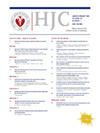Energy metabolism: from physiological changes to targets in sepsis-induced cardiomyopathy
IF 2.7
3区 医学
Q2 CARDIAC & CARDIOVASCULAR SYSTEMS
引用次数: 0
Abstract
Sepsis is a systemic inflammatory response syndrome caused by a variety of dysregulated responses to host infection with life-threatening multi-organ dysfunction. Among the injuries or dysfunctions involved in the course of sepsis, cardiac injury and dysfunction often occur and are associated with the pathogenesis of hemodynamic disturbances, also defined as sepsis-induced cardiomyopathy (SIC). The process of myocardial metabolism is tightly regulated and adapts to various cardiac output demands. The heart is a metabolically flexible organ capable of utilizing all classes of energy substrates, including carbohydrates, lipids, amino acids, and ketone bodies, to produce ATP. The demand of cardiac cells for energy metabolism changes substantially in septic cardiomyopathy, with distinct etiological causes and different times. This review describes changes in cardiomyocyte energy metabolism under normal physiological conditions and some features of myocardial energy metabolism in septic cardiomyopathy and briefly outlines the role of the mitochondria as a center of energy metabolism in the septic myocardium, revealing that changes in energy metabolism can serve as a potential future therapy for infectious cardiomyopathy.

能量代谢:从生理变化到败血症诱发心肌病的目标。
败血症是一种全身性炎症反应综合征,由宿主感染后的各种失调反应引起,并伴有危及生命的多器官功能障碍。在败血症过程中涉及的损伤或功能障碍中,心脏损伤和功能障碍经常发生,并与血流动力学紊乱的发病机制有关,也被定义为败血症诱发的心肌病(SIC)。心肌代谢过程受到严格调控,并适应各种心输出量需求。心脏是一个代谢灵活的器官,能够利用各种能量底物,包括碳水化合物、脂类、氨基酸和酮体来产生 ATP。脓毒症心肌病的病因不同,病发时间不同,心脏细胞对能量代谢的需求也会发生很大变化。这篇综述描述了正常生理条件下心肌细胞能量代谢的变化以及脓毒症心肌病心肌能量代谢的一些特点,并简要概述了线粒体作为脓毒症心肌能量代谢中心的作用,揭示了能量代谢的变化可作为未来治疗感染性心肌病的潜在方法。
本文章由计算机程序翻译,如有差异,请以英文原文为准。
求助全文
约1分钟内获得全文
求助全文
来源期刊

Hellenic Journal of Cardiology
CARDIAC & CARDIOVASCULAR SYSTEMS-
CiteScore
4.90
自引率
7.30%
发文量
86
审稿时长
56 days
期刊介绍:
The Hellenic Journal of Cardiology (International Edition, ISSN 1109-9666) is the official journal of the Hellenic Society of Cardiology and aims to publish high-quality articles on all aspects of cardiovascular medicine. A primary goal is to publish in each issue a number of original articles related to clinical and basic research. Many of these will be accompanied by invited editorial comments.
Hot topics, such as molecular cardiology, and innovative cardiac imaging and electrophysiological mapping techniques, will appear frequently in the journal in the form of invited expert articles or special reports. The Editorial Committee also attaches great importance to subjects related to continuing medical education, the implementation of guidelines and cost effectiveness in cardiology.
 求助内容:
求助内容: 应助结果提醒方式:
应助结果提醒方式:


